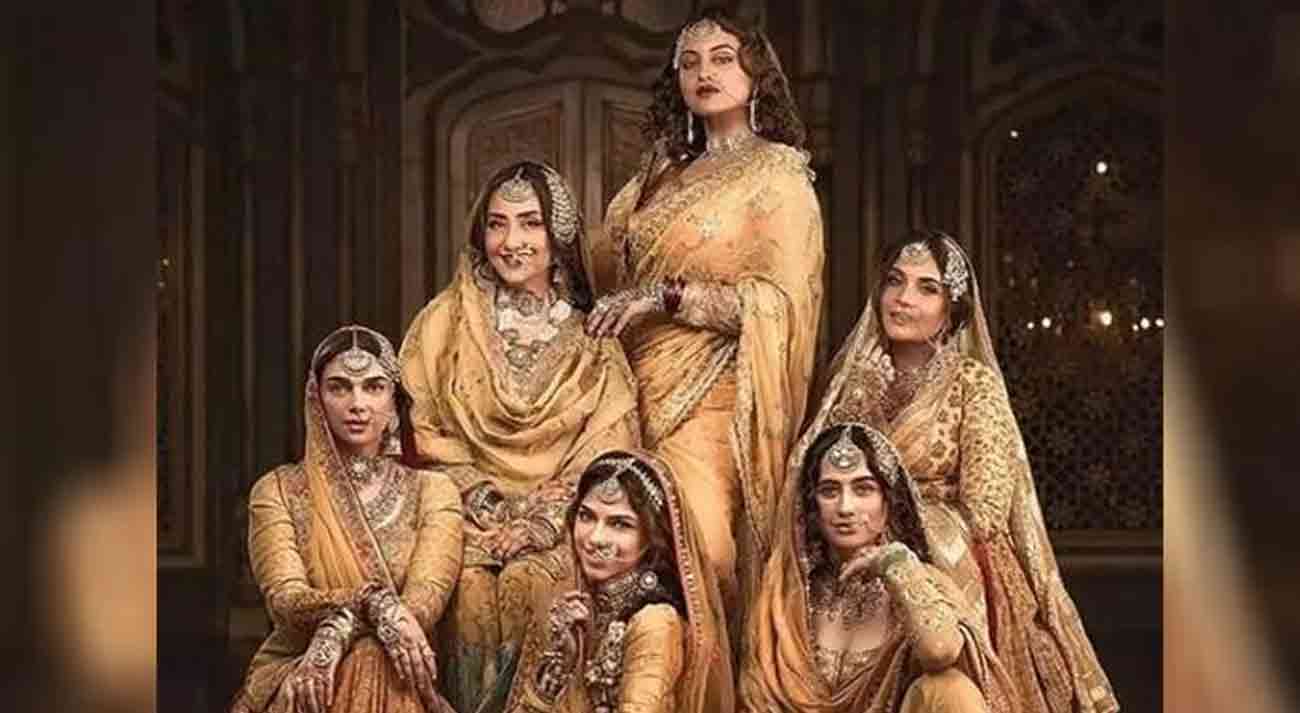
The series premiered on Netflix on last Wednesday. As the story is based on real-life incidents, the fact makes Sanjay Leela Bhansali’s debut series even more fascinating for the fans. Hundreds of workers dedicated approximately 10 months to recreate the Lahore of yesteryears under Bhansali's vision showing what a remarkable the dedication behind the scenes is.
Sanjay has spent 18 years on the story before bringing it to the audience. His OTT debut has worked for months building the sets in Mumbai’s Film City.
It is comprised of 8 episodes. It immerses viewers in a meticulously crafted rendition of Lahore from the early 1900s. It captures the era’s essence with unparalleled detail.
The cast of Heeramandi: The Diamond Bazaar includes stellar performers like Manisha Koirala, Sonakshi Sinha, Aditi Rao Hydari, Richa Chadha, Sanjeeda Sheikh, Sharmin Segal, Farida Jalal, Fardeen Khan, Adhyayan Suman and Shekhar Suman.
Every aspect of Heeramandi - from the lavish lifestyle of the Tawaifs to the intricate calligraphy adorning city walls and storefronts - takes viewers back in time.
For instance, it includes the story of a hamam - where Sharmin Segal loses one of the 101 pearls and was ordered by her mother Manisha Koirala to find it or she will have her friend sold off.
In the making of the show, jewellery also played a significant part. There were several scenes where ornaments were used to make a statement. For example, Sonakshi sells Manisha’s son for a life away from the brothel in exchange for an expensive necklace.
The clothes designed by Rimple and Harpreet speak volumes of his aesthetic for the actors and the scenes in the show.
Initially two decades ago, Bhansali's friend Moin Beg conceived as a 14-page concept. It underwent a transformative journey before making its way to the screen.
His decision to adapt it for a series format allowed for the exploring of many characters and narratives, breathing life into a world rich in history and culture.
Sanjay Leela Bhansali is known for his larger-than-life sets and spectacular stories. He has always impressed the audience with his craft. So when his new Netflix series, Heeramandi: The Diamond Bazaar, was announced, fans were excited to see the magic that Sanjay Leela Bhansali was about to showcase in his debut web series.
Its first OTT show revolves around the lives of the courtesans living in the red-light district of Heera Mandi in Lahore and the tale of love and betrayal in their lives.
Heeramandi is a bazaar in the Walled City of Lahore, specifically known as the city’s red light area. During the Mughal period, it was a song and dance community based on the Tawaif culture. It later turned into a red-light district during the British colonisation.
It was set up by Hira Singh Dogra, the prime minister of Punjab during the reign of Sher-e-Punjab, Ranjit Singh. He thought that apart from housing Tawaifs, the Shahi Mohallas in the heart of the city should be used as an economic hub. He set up a grains market in the neighbourhood, commonly known as ‘Hira Singh di Mandi’. The world heera, which means diamond in Urdu, is also thought to describe the local dancing girls.
“Shahi Mohalla” became home to Tawaifs during the 15th and 16th centuries. They used to perform Indian classical dance, Kathak and mujra for the audience. They also used to recite poetry and were trained by art teachers or ustads. However, everything changed during the British rule.
Later, the area earned its nickname “Bazaar-e-Husn” (Market of Beauty). The brothel houses were then developed in old Anarkali Bazaar, Lohari Gate and then Taxali Gate by the British for the recreation of their soldiers during the British Raj.




